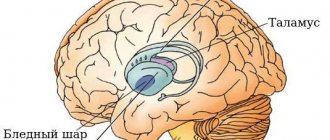Is it the same diagnosis?
Why I decided to start this article with the question of whether you should trust all doctors who diagnose dysarthria. In my practice, I often see it in the reports of neurologists and psychiatrists. However, having examined some children with a similar conclusion, I, to put it mildly, was perplexed why the doctor made such a diagnosis.
One day, I found myself in the office of a pediatric neurologist and saw how the doctor diagnosed a child with dysarthria, to whom he asked only two questions: “What is your name?” how old are you?". And then everything became clear to me. The paper will endure anything, but what the parents of a baby who has been given a similar diagnosis will do, how and why they will treat him, the doctor apparently was not too worried.
You can't make diagnoses in two minutes. Whatever the highly qualified doctor.
There are special tests, which I will discuss below, that can be used to diagnose dysarthria. Yes, they take time, but after they are carried out, you will know whether the child has dysarthria or not.
Mobility of speech organs
With dysarthria, the child cannot fully perform the movements necessary for speech. This leads to a violation of sound pronunciation. In mild cases, this may be distortion of individual sounds, “slurred speech.” In more severe cases, distortions, omissions and replacements of sounds are observed, tempo and expressiveness are disrupted.
With dysarthria, paralysis and paresis of the organs of articulation may occur. Speech becomes incomprehensible, even to the point of its absence due to complete paralysis of the speech motor muscles (anarthria).
Dysarthria often occurs in children with cerebral palsy.
The causes of dysarthria can be:
- abnormalities in intrauterine development (toxicosis, hypertension (high blood pressure), nephropathy during pregnancy, etc.;
- infectious diseases (ARVI, Influenza, etc.) suffered during pregnancy, asphyxia of newborns;
- rapid or prolonged labor;
- long waterless period;
- mechanical obstetrics (forceps, vacuum).
In the first year of life, such children are observed by a neurologist, they are prescribed medication and massage. The diagnosis includes PEP (perinatal encephalopathy) for up to a year. And after a year, the diagnosis is either removed or MMD (minimal cerebral dysfunction) is given.
Forms of dysarthria and their characteristics of the disorder (Table)
Dysarthria is a violation of the pronunciation side of speech due to insufficient innervation of the speech apparatus. With dysarthria, unlike aphasia, the mobility of the speech organs (soft palate, tongue, lips) is limited, which makes articulation difficult. In adults, dysarthria is not associated with a disorder of the speech system: hearing, reading and writing disorders. Often in childhood, dysarthria leads to impaired pronunciation of words and, as a consequence, impaired reading and writing, and sometimes general underdevelopment of the language. Detection of dysarthria requires a neurological examination, based on the results of which treatment and correction by a speech therapist will be prescribed.
Table of the main forms of dysarthria and their characteristics of the disorder
| Characteristics, violations | Main forms of dysarthria | |||
| Spastic-paretic dysarthria | Spastic-rigid dysarthria | Hyperkinetic dysarthria | Atactic dysarthria | |
| 1. Leading syndrome | Spastic paresis | Spastic paresis and tonic disorders of speech control such as rigidity | Hyperkinesis | Ataxia |
| 2. Form of cerebral palsy | Spastic diplegia, hemiparesis | Double hemiplegia | Hyperkinetic form of cerebral palsy | Atonic-astatic form of cerebral palsy |
| 3. Nature of muscle tone disorder | Spasticity, less often - hypotension | Muscle spasticity and rigidity (maximum sharp increase in muscle tone throughout the speech and skeletal muscles, aggravated by external stimuli) | Dystonia, less often hypotension (major) dependence of tone on external influences, emotional state, voluntary movements. | Hypotension |
| 4. The presence of involuntary violent movements and synkinesis | Synkinesis, oral synkinesis. Reflexes of oral automatism may be preserved. | Frequent presence of brainstem synkinesis and oral automatisms (forceful sucking and licking movements) | Hyperkinesis of the tongue, face, neck; synkinesis. | Tremor of the tongue (with purposeful movements) |
| 5. Violations of articulatory motor skills, articulatory praxis, facial expressions. | Decreased volume and amplitude of articulatory movements of the tongue and lips (of varying degrees). Performing and maintaining articulatory postures may be affected (kinetic apraxia); switching from one articulation to another (kinetic apraxia). Facial hypomimia. | The volume of articulatory movements is strictly limited. Inclusion in movement - with an extended latent period (up to several minutes). When included in the movement, there is a sharp increase in tone in all speech and skeletal muscles. The tongue is tense, inactive, pushed back, and it is not always possible to remove it from the oral cavity. Lack of differentiation of labial and lingual movements (mixed labial-lingual articulation). Facial expressions are very poor (the face is frozen, mask-like). | The volume of articulatory movements may be sufficient. There are particular difficulties in maintaining and lowering an articulatory posture (kinesthetic apraxia) and when switching from one articulation to another, that is, the automation of articulatory movements suffers (kinetic apraxia). | Dysmetria (disproportion) of articulatory movements; more often – hypermetry (increased amplitude, exaggeration, slowness of movements). Difficulty performing and maintaining articulatory patterns (kinesthetic apraxia). Facial expressions are sluggish. |
| 6. The state of the act of eating (chewing, swallowing) | The act of eating is slow, but coordinated. The processes of chewing and swallowing are impaired (difficult) | Chewing, biting, and swallowing are grossly impaired. Chewing is often replaced by sucking. Coordination between breathing, chewing and swallowing is impaired. | The processes of chewing and swallowing are difficult and discoordinated | Chewing is weakened |
| 7. Speech intelligibility. Pronunciation problems | Speech intelligibility is reduced (to varying degrees). In severe cases, there may be a disturbance (blurredness) in the sound pronunciation of all groups. Vowel averaging. The pronunciation of front-lingual sounds (whistling, hissing, sonorants) suffers. The difference between dull - voiced, hard - soft sounds is often erased (more often - palatalization). Closing labial sounds are impaired. | Speech intelligibility is significantly reduced, and speech is often difficult to understand without knowing the context. Speech sounds lack a clear phonetic design. Unintelligibility of consonants. Vowel averaging. Weakness of differentiation of labial, dental; hard - soft, voiced - deaf. | Intelligibility is reduced (speech is slurred, blurred, and sometimes difficult to understand). Characterized by the absence of stable violations of sound pronunciation (omissions, substitutions, mixing of sounds are not constant). Lots of distortion of sounds (frictional and sonorous). | Speech intelligibility is reduced. Frontal, labial, and plosive sounds are impaired. |
| 8. Breathing disorders | Speech breathing disorders (speech exhalation is shortened and exhausted, inhalation is shallow). | Severe breathing problems | Severe breathing problems | Asynergy – asynchrony of breathing, voice production and articulation |
| 9. Voice disorders | Voice of insufficient strength and sonority (weak, exhausted). There may be nasalization (nasal tone of voice). | The voice is quiet, dull, compressed, tense | The voice is tense, intermittent, vibrating, changing in pitch, strength, and sonority. There may be nasalization of the voice. | The voice is exhausted, fading towards the end of the phrase; with a nasal tint. |
| 10. Prosody disorders | The amplitude of voice modulations is reduced, there are no tempo-rhythmic interruptions necessary for lively intonation. The voice is poorly modulated, monotonous. The pace is slow. | There is almost no voice modulation. The timbre is poor. The pace is a little faster. | The melodic and intonation side of speech is disrupted, the emotional connotation is lost. Weak expression or absence of modulation (voice is monotonous, unmodulated) | There is almost no voice modulation. There is practically no intonation. The rhythm of speech is chanting. The pace is slow. |
| 11. Autonomic disorders | Hypersalivation (ptyalism, drooling) | Hypersalivation (ptyalism, drooling) | There is usually no drooling in “pure” hyperkinetic syndrome | There may be hypersalivation |
| Spastic-paretic dysarthria | Spastic-rigid dysarthria | Hyperkinetic dysarthria | Atactic dysarthria | |
How to determine whether a child has dysarthria or not
To determine the presence or absence of dysarthria in a child, special tests are used.
Try doing test tasks with your child yourself.
Test tasks to check the mobility of the speech organs
All tasks must be done in front of a mirror. The adult shows the movements, and the child repeats. He may not understand how to do it the first time. Therefore, before drawing conclusions, repeat the exercise several times.
- The child alternately makes a smile with his lips and then a straw. The teeth are closed, the chin is motionless. Only the lips work.
- You need to stick your tongue out of your mouth and then put it back.
- You need to open your mouth slightly and place your wide, outstretched tongue on your lower lip. You can tell the child: “The tongue is sleeping, covered with a blanket. Let's let him sleep peacefully." It is necessary to hold it motionless for 5-6 seconds.
- We open and close our mouth wide, “slapping” our lips.
- “Slap” your lips and open your mouth, then close it and make a straw. We repeat several times in the same sequence.
- The mouth is open, the tip of the tongue touches the corners of the mouth. Exercise "Clock". We simulate a clock pendulum.
Results:
- If the child performs all the exercises without any difficulties, even if not on the first try, then he does not have dysarthria.
- You have discovered impairments in the mobility of the speech organs based on the following signs:
- Asymmetrical muscle work. The protruding tongue deviates to the right or left from the midline. The smile also shifts to the side.
- Inability to perform individual movements. The child is completely unable to make any movement. Cannot reach the corners of the mouth with the tip of the tongue. Or just one corner.
- Excessive amplitude when performing movements. The child wants to touch the upper teeth, but sticks his tongue out of his mouth too much, reaching his upper lip.
- Unjustified synchronous movements of the speech organs. While making one movement, the child unconsciously makes another. For example, when the tongue moves left and right, the lower jaw repeats the movements of the tongue.
- Muscle tone disorders. There is excessive tension in the muscles of the tongue and lips. Or the opposite option, when the muscles are very sluggish.
- Nasalization of the voice. You hear the child speak through his nose.
- General motor clumsiness. There is a limitation of active movements. They stand unsteadily on one leg, cannot jump, walk along a “bridge,” etc. It is difficult to switch from one movement to another.
- Fine motor skills of the hands are poorly developed. Children cannot dress themselves for a long time. During drawing classes, they don’t hold a pencil well and their hands are tense. Motor clumsiness of the hands is especially noticeable during applique classes and with plasticine.
School-age children in the 1st grade experience difficulties in mastering graphic skills (some experience “mirror writing”, substitution of letters, vowels, word endings, poor handwriting, slow pace of writing, etc.).
Most of the signs listed above indicate moderate dysarthria.
Signs of mild dysarthria:
- The child cannot immediately find the right position for the organs of articulation.
- Hold unchanged for 5-6 seconds.
- It is extremely difficult to switch from performing one movement to another.
- The violations are almost invisible. They can easily be confused with poor coordination and the inability to perform motor exercises according to a pattern.
What should parents do if their child has dysarthria?
Depending on the severity of dysarthria, the following actions can be taken:
Dysarthria of moderate severity.
- Show the child to a neurologist and speech therapist who knows the technique of speech therapy massage.
- If it is not possible to go to a speech therapist, you can do elements of speech therapy massage and a set of articulation gymnastics yourself at home.
- Form correct speech breathing with the help of special games and exercises.
- Develop fine motor skills. These could be puzzles, plasticine modeling, LEGO constructors, other games and activities. Also, to develop fine motor skills, non-traditional methods of influence are used, such as Su-Jok therapy. You can learn more about this by reading my article: “Secrets of Su-Jok therapy for the development of children’s speech.”
- Engage in general strengthening of the baby’s body.
Therapeutic gymnastics, hardening and other activities to improve health.
Mild dysarthria.
- Show the child to a neurologist.
- Sign up for classes with a speech therapist.
- If it is not possible to attend speech therapy classes, then do articulation gymnastics yourself at home with your child.
- Develop fine motor skills.
- Work on developing proper speech breathing.
Where to start treatment
Treatment of any disease must begin with a correct diagnosis. A young patient is first referred to a neurologist for consultation. After the examination, the specialist, if necessary, prescribes examinations :
- EEG;
- electromyography;
- MRI;
- electroneurography;
- transchannel magnetic stimulation.
After the diagnosis is established, the child is sent to a speech therapist who conducts special speech therapy tests. They allow you to determine the degree of the disease and its form. Subsequently, a neuropsychiatrist and a defectologist are involved in the process.
There are four degrees of the disease :
- 1st degree – the diagnosis is established only through special tests by a competent specialist;
- 2nd degree – speech is understandable, but has minor defects;
- 3rd degree – only close relatives understand the speech;
- 4th degree – speech is incomprehensible or absent.
Depending on the degree of the disorder, the specialist prescribes treatment and carries out corrective measures.
Speech therapy massage
In speech therapy practice, several types of massage are used:
- Massage based on classical techniques (strengthening or relaxing);
- Spot;
- Probe;
- Hardware;
- Self-massage.
The tasks include: normalizing muscle tone, eliminating facial asymmetry; reducing the period of production, automation and differentiation of sounds.
Speech therapy massage in full should be done by a speech therapist who has completed special courses. Some elements of which, as well as self-massage, parents, together with their child, can do at home on their own.
Massage is a very effective method for many articulation disorders. Such as: dysarthria, some forms of dyslalia, rhinolalia. It has a beneficial effect on muscle tone and coordination of fine articulatory movements.
Before performing a massage, it is important to determine the muscle tone of the speech apparatus. It can be increased (hypertonicity) or decreased (hypotonicity).
How to determine the muscle tone of your child’s articulatory apparatus
For an accurate determination, it is better, of course, to consult a specialist: a speech therapist or a neurologist.
If there is no opportunity to consult with specialists, then you can try to do it yourself. Here are some recommendations for conducting an examination:
- The child should be in a lying position, so the muscles are most relaxed. Place a small pillow or cushion under your neck.
- Healthy muscles are soft, firm, elastic. When you touch them, the child does not feel discomfort.
- The muscles are tense, dense, and passive movements are difficult. All these signs indicate increased muscle tone (hypertonicity).
- The muscles are flaccid, flabby, and sometimes there is increased salivation. These signs indicate decreased tone (hypotonicity).
- Muscle damage can be observed only on one side. The tongue, jaw, lips deviate in one direction. In this case, massage should begin on the side where the muscles are in normal tone.
If you have determined that your child has low muscle tone, then you need a tonic (stimulating) massage.
If the tone is increased, then a relaxing (inhibiting) massage is needed.
Contraindications to speech therapy massage
- Massage should not be performed after eating;
- Skin diseases - fungal, pustular, herpes, cracks, hematomas;
- Infectious: sore throat, acute febrile conditions, childhood infections;
- Dental: stomatitis, any surgical interventions, extraction or loss of teeth.
It is better if you enroll your child with a speech therapist who has completed speech therapy massage courses. The specialist will determine muscle tone, conduct a massage course, work on the development of speech breathing, fine motor skills, and phonemic hearing. Will work on the sound side of speech. Such work is always multitasking and the speech therapist knows exactly how to organize it correctly.
If you do not have the opportunity to contact a specialist, then you can try to organize speech therapy classes, including elements of speech therapy massage, at home.
In a comprehensive system of corrective measures, massage precedes articulation, breathing and voice exercises.
You can download the full range of speech therapy massage in the “Download Materials” tab.
Causes of erased dysarthria in preschool children
The main reason for the erased form of dysarthria is a violation of the innervation of the muscles of the lips, tongue, and soft palate.
Such disorders are caused by organic brain damage in various periods of child development:
- During the prenatal period, the fetus can be negatively affected by infectious diseases of the mother (herpes infection, rubella, toxoplasmosis, viral hepatitis, cytomegalovirus infection). Immunological incompatibility of the fetus and mother, toxicosis, decompensated diabetes mellitus or gestational diabetes play a role. As a result of these conditions, fetoplacental insufficiency develops, the fetus experiences oxygen deficiency, that is, hypoxia;
- During childbirth, traumatic injury is possible as a result of rapid or protracted labor or the use of obstetric forceps. A long anhydrous period has a negative effect;
- In the postpartum period and in the first year of a child’s life, damage to the central nervous system can occur due to injuries, infectious and other severe diseases, inflammatory diseases of the substance and cerebral cortex.
All of these factors lead to damage to the nerves that innervate the muscles of the articulatory organs: trigeminal, facial, glossopharyngeal, sublingual. Each nerve has its own characteristics. For example, damage to the trigeminal nerve is indicated by limited movements in the lower jaw, lips, tongue, facial nerve - facial muscles, glossopharyngeal nerve - root and back of the tongue, hypoglossal nerve - impaired tongue motility, difficulty raising the tongue to the palate.
Working on sound pronunciation with dysarthria
If the sound pronunciation of several sounds is impaired, consistency in work is important. First of all, you need to start with the sounds that are most easy for your child to articulate. Or it could be sounds that he pronounces incorrectly in passive speech, but repeating after you (reflectively) correctly.
Before calling and staging sounds, it is important to distinguish them by ear. Auditory training is required. The child must learn to listen to himself, to catch the difference between his pronunciation and the normalized sound.
There are several techniques for producing sounds for dysarthria. The most common method is when the child’s tongue and lips are given the necessary position for a particular sound. Probes, flat tongue plates and a number of other devices are used. The child's attention is drawn to the sensation of positions. He then performs the movements independently, with or without some assistance from an adult.
To automate sounds, the technique of simultaneous pronunciation and motor action is used. For example, writing and speaking or speaking and clapping hands, tapping feet.
Then the new sound is fixed in syllables, words and sentences. Moving from simple exercises to more difficult ones, increasing the pace of exercises.
Features of erased dysarthria
Erased dysarthria is a pathology in which mild disturbances of nerve conduction of the organs of articulation are observed. Patients have mild disturbances in sound production and stress placement defects. Speech with erased dysarthria is not clear and unexpressive. Patients have difficulties with sound reproduction of certain phonetic groups and with their automation. This form is most common among children. Signs of dysarthria are also observed in writing - handwriting with dysarthria is illegible, and children write slowly.
Erased dysarthria is diagnosed by determining the neurological and speech therapy status.
Depending on the location of the lesion, clinical manifestations also differ. With erased cortical dysarthria, only phonetics is disturbed, with preservation of phonetics and correct stress, since only a section of the cortical center is affected.
In case of damage to the nuclei and ganglia, pronounced disturbances in stress are observed, but disturbances in perception and the production of sounds are practically preserved, or are slightly impaired.
Pseudobulbar dysarthria leads to a uniform disturbance of all components of speech, since the conduction pathways from the cortex to the bulbar nuclei are affected.
The mixed form often includes a defect in sound pronunciation and differences in sounds.
A mild degree of erased dysarthria is characterized by minimal manifestations of pronunciation and stress defects and quite often goes unnoticed. But with a thorough examination by a specialist, the pathology is established. Correction of mild degrees of erased dysarthria includes breathing exercises, finger and articulation exercises, speech therapy and general massage, speech correction, etc.








